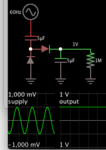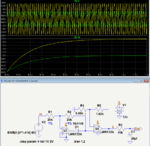uj1964
Newbie level 6

Need help in making 1VAC to 1VDC converter. I tried to simulate on PROTEUS different OP-AMP circuits available on net. But not working. it always give high voltage(supply voltage) at output when input is given 1VAC.
May pls. help.
May pls. help.








